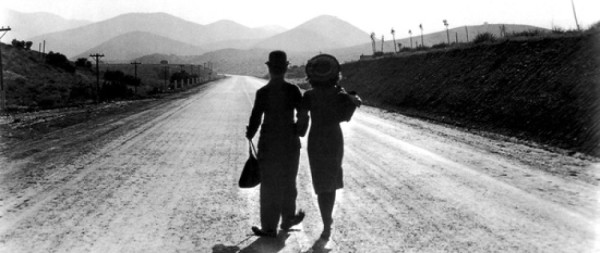Come and Get It
Directed by Howard Hawks and William Wyler (logging scenes directed by Richard Rosson)
Written by Jane Murfin based on the novel by Edna Ferber
1936/USA
The Samuel Goldwyn Company
First viewing
[box] “Being an old maid is like death by drowning, a really delightful sensation after you cease to struggle.” ― Edna Ferber[/box]
I had never seen 1936’s other mid-life crisis movie. Come and Get It is a solid film with some excellent performances. It is also the first 1930’s film I have seen with a strong environmental undercurrent.
It is 1880’s Wisconsin and Barney Glasgow (Edward Arnold) is the hard-hitting ambitious boss of a lumber operation that is clear-cutting huge swaths of forest. He comes up with an idea for buying up even more land for clearing in connection with railroad right-of-ways and takes it to the owner with the proposition that he be made a partner. His marriage to the owner’s daughter, the plain Emma Louise, is part of the deal.
After a record harvest, Barney treats all his hands to a blow-out at a saloon. There, he and right-hand man Swan Bostrom (Walter Brennan) meet beautiful tender-hearted saloon singer Lotta Morgan (Frances Farmer). Barney and Lotta fall deeply in love but Barney’s ambition trumps his heart and he leaves her to marry Emma Louise. Swan soon marries Lotta instead.
Twenty years later, Barney is vaguely discontented with his life as a robber baron and his marriage to the straight-laced Emma Louise. His son Richard (Joel McCrae), who has invented a new-fangled paper cup and supports the trust-busting campaign of Teddy Roosevelt, is also a thorn in his side. Swan comes to the rescue when he invites Barney to come hunting at their old stomping grounds. Lotta is dead and Swan lives with his beautiful daughter, also named Lotta (and played by Frances Farmer).
The remainder of the story is devoted to Barney’s attempts to recapture his lost youth by winning the love of Lotta and to his clash with Richard.
I liked this a lot. I had heard about Frances Farmer for years but had never seen her in anything until today. She was very good. Not a trace of her later troubles shows on her lovely face. I think the acting honors go to Edward Arnold, though. He is always good but here he had a multi-faceted character with a wide range of emotions and was sympathetic and ruthless at the same time. Walter Brennan was almost unrecognizable under a thick pseudo-Swedish accent. (He actually says “yumpin’ yimmeny”!) And what can I say about Joel McCrea? Just looking at him is enough for me. The logging sequences are pretty darn awesome and convey the plunder of the wilderness well.
Soon after filming began, producer Samuel Goldwyn underwent two major surgeries. When Goldwyn viewed a rough cut of the film he was shocked to discover Hawks had strayed far from the tone and focus of the novel. When Hawks refused to comply with Goldwyn’s demands for major changes, the producer fired him from the project and ordered William Wyler to take over the production
Walter Brennan won the first of his three Best Supporting Actor Oscars for his role. 1936 was the first year that Supporting Acting Oscars were awarded by the Academy.
Clip – Frances Farmer sings “Aura Lee”



 The soundtrack includes a lot of TV and radio news which gives a real flavor of the time. There is a fantastic sequence of high-speed shots from all the TV shows he watched one night that is like a mini time capsule. In between the street photography, there are lots of times where the guy just rants to the camera. In the end, he is disappointed that his film did not explain his life. I think the audience is a lot more able to spot his gradual disintegration than he is.
The soundtrack includes a lot of TV and radio news which gives a real flavor of the time. There is a fantastic sequence of high-speed shots from all the TV shows he watched one night that is like a mini time capsule. In between the street photography, there are lots of times where the guy just rants to the camera. In the end, he is disappointed that his film did not explain his life. I think the audience is a lot more able to spot his gradual disintegration than he is. SPOILER: Well, this film’s claim to fame is that it is a fake documentary/satire but I didn’t know that and I was surprised when the credits started rolling. This made me even more impressed with the film. It is so cleverly done.
SPOILER: Well, this film’s claim to fame is that it is a fake documentary/satire but I didn’t know that and I was surprised when the credits started rolling. This made me even more impressed with the film. It is so cleverly done.